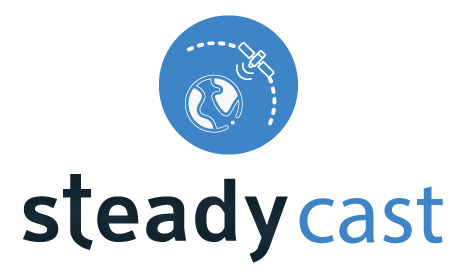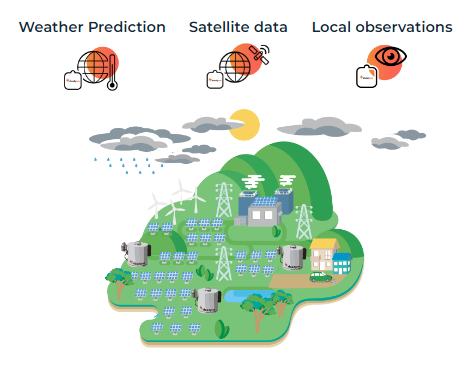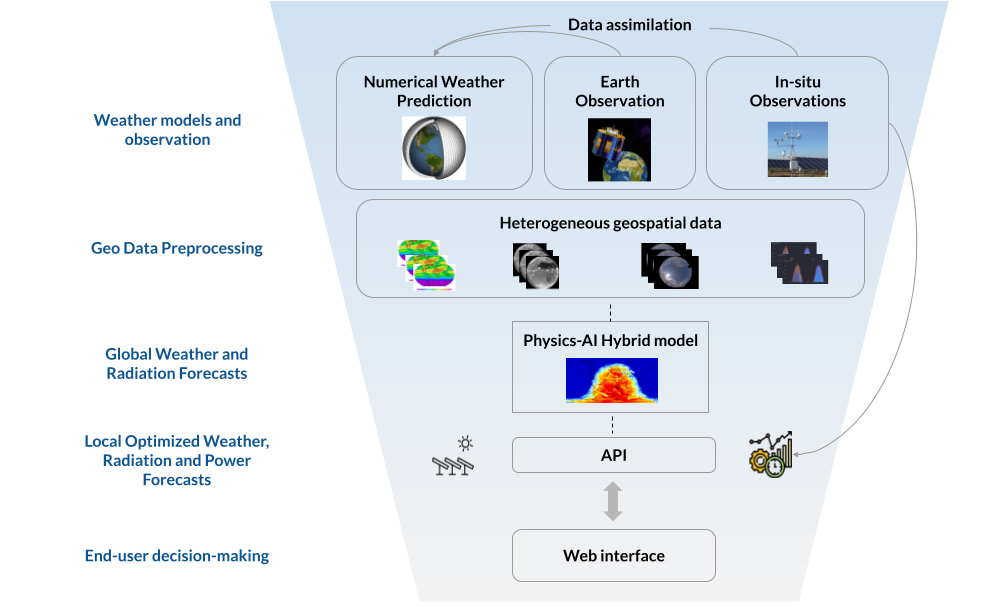
Objectives of the service

The massive development of renewable energies (RE), such as solar, is an essential lever for the electrification of numerous end-users and the achievement of carbon neutrality. However, solar energy sensitivity to climate and weather conditions brings several challenges to electrical systems planning and operation.
Solar production forecasting plays an increasingly important role for optimizing security of power supply with high RE penetration at the best cost, while maximizing the profitability of power plants and minimizing exposure to price volatility on electricity markets.
Yet, the capabilities of state-of-the-art operational solutions often struggle to meet customers’ increasingly demanding needs and expectations. Lack of accuracy mainly arises from limitations of Numerical Weather Prediction (NWP) models (resolutions, update frequency, data assimilation gaps) and solar radiation nowcasting systems (simplified modelling of atmospheric physics such as clouds and Radiative Transfer). Dealing with forecasting uncertainties, a large amount of data and decision making in complex weather situations are also huge challenges for end-users.
Steadycast aims at providing best-in-class solar forecasting services from minutes to days ahead:
-
Cloud based one-stop shop solution available worldwide (SaaS)
-
Unprecedented accuracy level (+10-15% improvement at the intraday scale)
-
Custom end-user tools and analytics
-
99.9% guaranteed availability
Users and their needs
The targeted users are located worldwide and structured along the electricity value chain that follows the path from producers to consumers:
-
Grid managers (TSOs / DSOs / utilities)
-
Solar asset managers (EPC / developers / operators / EMS providers)
-
Hybrid plants operators (off-grid micro-grids)
-
Trading & portfolio managers (in-house trading / corporate trading)
-
Smart building owners (Self-consumption)
-
Research organizations
The expected gains are economic, technical and environmental. Economic as solar energy is one of the cheapest sources of energy on the market, technical as its deployment is easy and environmentally friendly as it lowers carbon emissions. Capturing these gains relies on maximizing solar energy penetration into the grids, which is challenged by weather variability.
Benefits of best-in-class solar forecasting can be summarized as follow:
-
Maximizing solar energy penetration
-
Lower use of fossil-based generation means in case of solar variability
-
Optimize energy system mix leading to CAPEX savings
-
Meeting lowest cost of energy
-
Mitigate risk incurred by solar variability
Stakeholders will capture different benefits: grid operators will reduce spinning reserves, developers will lower their CAPEX, plant operators will maximize the energy sold into the grid, regulators will mitigate the risk of blackouts.
The study specifically involves EDT Engie and TotalEnergies for the collection of requirements and assessment of the service viability.
Service/ system concept
The platform architecture is illustrated below. The innovation displays a breakthrough on the data processing and forecasting approach delivering unprecedented level of performance fueled by:
-
The fusion of heterogeneous data (EO, NWP, in-situ observations) in a unique modeling chain
-
A forecasting approach based on the alliance between AI (e.g. nowcasting of clouds based on Deep Learning) and physical models (e.g. Speed-up Monte-carlo Advanced Radiative Transfer code)
-
The advanced use of Big Data & analytics for data storage, access, processing and visualization (instant results and frequent processing tasks)
-
A scalable cloud computing infrastructure
Delivered data through API:
-
Probabilistic forecasts time series
-
Solar and weather parameters (radiation, power, temperature, etc.)
-
Forecast time horizons ranging from a few minutes to several days ahead
-
Forecast time resolution up to 1 minute
-
Worldwide geographic coverage
-
All solar technologies (mono/bifacial PV, single/double axis trackers)
-
All sizes of solar installations and aggregations (rooftop, utility-scale, region, country)
User web interface features:
-
Project configuration and portfolio management
-
Historical and live data visualization (time series, maps, animations)
-
Custom indicators (confidence indexes, critical events alerts, etc.)
-
Performance evaluation over past periods with error metrics adapted to user needs
-
Online backcasting simulations and reports

Space Added Value
Steadycast relies on real-time images from several geostationary meteorological satellites operated by NOAA (GOES-W, GOES-E), EUMETSAT (MSG-0°, MSG-IODC) and JMA (HIMAWARI), covering the whole globe at high spatio-temporal resolution – 5 to 15 minutes and 500m to 3km depending on regions and channels (visible/infrared). Thus, detailed information on the main drivers of surface solar radiation is ingested continuously: atmospheric gases (e.g. total column water vapor), clouds (e.g. type, altitude, dynamics, microphysics), aerosols (e.g. dust concentrations), surface albedo.
EO plays a central role in nowcasting and very short range forecasting. Geostationary satellites provide continuous observations of clouds and atmospheric state at a global scale, with a larger spatial coverage compared to in-situ observations such as ground based all sky imagers and a higher spatial resolution compared to NWP models.
Satellite products such as Cloud Optical Thickness and Cloud Types are also derived from several existing packages (e.g. NWC SAF) in order to improve the accuracy of Radiative Transfer which is a critical part of the forecasting process.
Current Status
There are currently more than 100 users in 25 countries using our services. We are working closely with them to enhance our Value Proposition. They will benefit from the improvements we will make through this study.
We have already developed the core of this new platform, which has been launched in Q4 2022. This study, which kicked off in June 2022, has demonstrated that:
-
Advanced Radiative Transfer modelling can improve satellite-based solar resource estimates by +15-25% on average.
-
Deep Learning models are able to improve cloud forecasts by +20-25% on average, for the next few hours.
-
Advanced geospatial data visualization tool can be integrated into our user web interface






